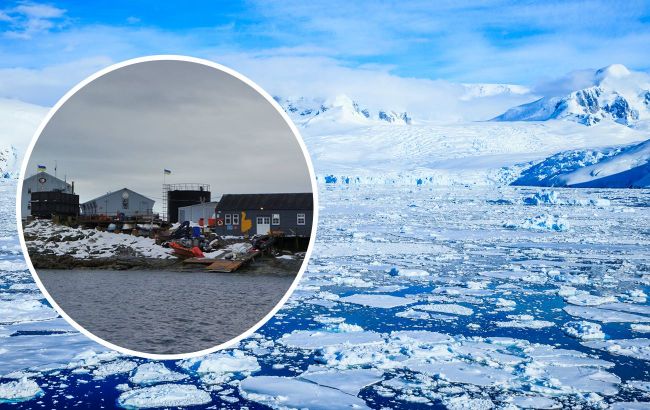5 strangest finds of scientists in Antarctica
 RBC-Ukraine collage
RBC-Ukraine collage
Over the past few decades, scientists in Antarctica have made numerous discoveries and findings. All of these will contribute to science, open new horizons, and help us understand certain aspects of our planet's development. However, five discoveries have particularly astonished researchers, citing T4.
Lake Vostok
One of the most enigmatic bodies of water on Earth is Lake Vostok, which lies beneath an ice sheet about 4 kilometers thick and is located near the Antarctic station Vostok.
This massive subglacial lake, covered with ice for millions of years, may contain unique forms of life that have evolved in complete isolation.
Research on Lake Vostok could provide scientists with valuable information about conditions similar to those on other planets and their moons.
The discovery of this lake occurred only in 1996, although, based on research data and theoretical considerations, scientists were confident of the lake's existence since the 1970s. It is worth noting that over 140 subglacial lakes have been discovered in Antarctica.
Remnants of tropical forests
In 2012, scientists found evidence of tropical forests in Antarctica. These forests could have existed about 52 million years ago. While drilling ice, researchers discovered deposits of pollen, spores, and plant remains, indicating that the continent once had a warm and humid climate.
This discovery completely overturns our understanding of Earth's climate history. It is possible that 34-56 million years ago, during the Eocene epoch, Antarctica was covered with dense forests and had a very different climate. Pollen deposit analysis showed that it belonged to tropical and subtropical plants, such as palms and rhododendrons.
Martian meteorites
Searching for meteorites from space in Antarctica is highly effective because the white ice expanses contrast with the dark rocks. And scientists were lucky, they found these rocks. Among the discovered meteorites, some originate from Mars.
They contain microscopic structures that could be evidence of ancient life on the Red Planet.
Giant viruses
In 2014, viruses significantly larger than any previously known were found in Antarctica. These giant viruses, discovered in the ice, may be remnants of ancient microorganisms preserved millions of years ago.
According to scientists, studying such viruses significantly aids in understanding the evolution of life on Earth.
Cryptoendolithic microorganisms
Cryptoendoliths are microorganisms that live inside rocks and under extreme conditions. Scientists found these organisms in the icy deserts and deep within the glacial layers of Antarctica.
Studying these organisms provides a unique opportunity to understand how life can survive in conditions similar to those on other planets, such as Mars.

